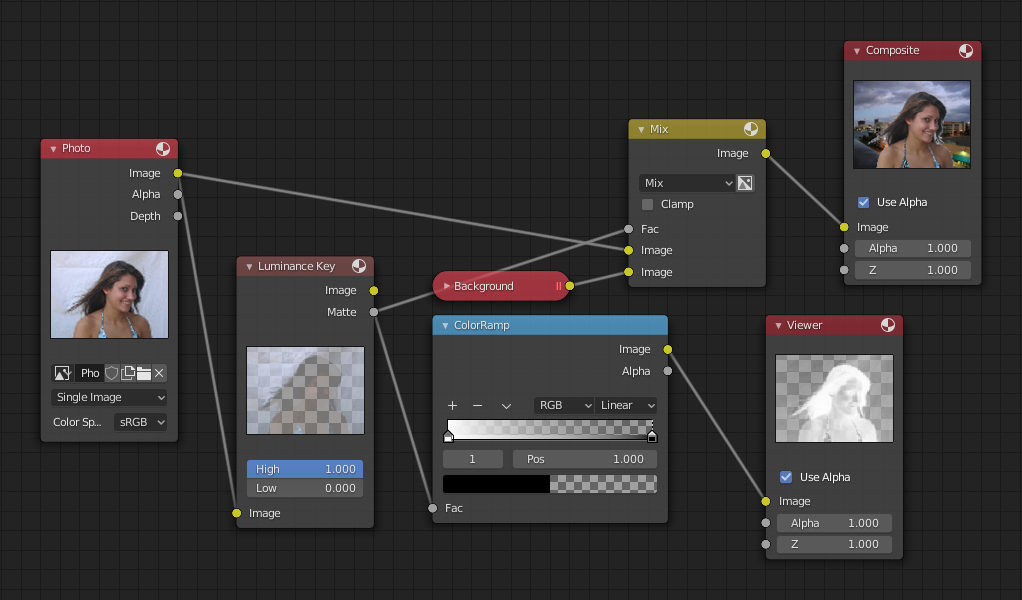Нода «Ключ яркости» (luminance key node)¶

Нода Luminance Key определяет фоновые объекты от объектов переднего плана по разнице уровней светимости (яркости).
Стандартные кадры взрывов, дыма или обломков обычно снимаются на сплошном тёмном фоне, а не на зелёном экране. Эта нода способна отделять эффект переднего плана от фона. Её также можно использовать для изменения неба при переэкспонированном или сером небе, которое не подходит для хромакея.
Совет
При композитинге кадра с чем-то, излучающим свет и имеющим тёмный фон, например, с огнём – лучшие результаты даст нода Mix с использованием оператора Screen или Add.
Входы (inputs)¶
- Изображение (image)
Стандартный цветовой ввод.
Свойства (properties)¶
- Предел (limit)
- Высокое (high)
Определяет самые низкие значения, которые считаются передним планом. (Которые должен быть – относительно – светлым: от этого значения до 1.0.)
- Низкое (low)
Определяет самые высокие значения, которые считаются фоновыми объектами. (Которые должны быть – относительно – тёмными: от 0.0 до этого значения.)
Примечание
Уровни яркости между двумя значениями формируют градиент прозрачности между объектами переднего плана и фона.
Выходы (outputs)¶
- Изображение (image)
Изображение с альфа-каналом, настроенным для ключевого выделения.
- Маска (matte)
Чёрно-белая альфа-маска ключа.
Пример¶
Для этого примера модель была снята на белом фоне. Используя ноду Luminance Key, мы получаем маску вывода, где фон белый, а модель чёрная; противоположность тому, что мы хотим. Если мы хотим использовать маску, нам нужно поменять местами значения белого и чёрного. Как это сделать? Нас выручит нода Color Ramp – мы устанавливаем левый цвет на белый альфа 1.0, а правый цвет на чёрный альфа 0.0. Таким образом, когда Color Ramp принимает чёрный – она выдаёт белый, и наоборот. Показана перевернутая маска; её белый контур теперь можно использовать как альфа-маску.

Использование Luma Key с преобразованием значений чёрного и белого.¶
Теперь для смешивания нам на самом деле не нужна нода Alpha Over; мы просто можем использовать маску в качестве коэффициента входных данных. В этом странном случае мы можем использовать маску напрямую; мы просто переключаем входные узлы. Как вы можете видеть, поскольку маска белая (1.0) там, где мы не хотим использовать изображение модели, мы передаём фоновое фото в нижний сокет (напомним, что нода Mix использует верхний сокет, где коэффициент равен 0.0, и нижний сокет, где коэффициент равен 1.0). Подача нашей исходной фотографии в верхний сокет означает, что она будет использоваться там, где нода Luminance Key выдаёт чёрный цвет. Вуаля, наша модель телепортируется из Атланты на борт круизного лайнера, пришвартованного в Майами.